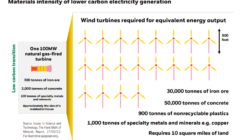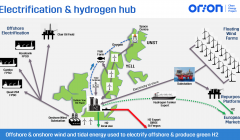Letters / Updating the council’s climate change policy
Natural (white) hydrogen has been found elsewhere in the world but should Shetland be so lucky it would take several decades to benefit, therefore best to concentrateon what might benefit Shetland in the meantime.
Much hype is written regarding hydrogen, most recently by the Scottish Government, promoting a hydrogen backbone export pipeline (a connection from Shetland!) to the continent, also alluded to by EnQuest and others.
This seems to have been included in the SIC climate change tome, now returned to officials/consultants for further consideration and or reform.
The shortfall in Russian gas is being met by LNG imports from the USA. An H2 line between France and Germany is mooted, perhaps based upon the newly discovered Lorainne field, but governments and industrialists baulk at the high cost of pipelines (ie large subsidies required) needed to comply with the requirements, much more onerous than the natural gas grids, in addition to the deficit in the calorific content.
Using electricity from offshore wind turbines in the nearby German sector to make H2 isn’t economic as it would have to be priced at a discount to LNG due to the calorific difference in accordance with the Amsterdam TTF futures market.
Surely is it obvious that without subsidy a pipeline from Shetland to Europe is uneconomic, and even exporting H2 direct to Scotland, coupled with geographic swops within the UK to deliver by pipeline from East Anglia would not improve the netback price at Sullom.
Perhaps, (in addition to blending a small percentage of H2 into the Sirge line?) a better reward to the SIC coffers would be to export Shetland’s electricity to Scotland/UK, but that would require yet another cable to do so as the vast amounts of electricity purported to be generated from NE1+(Arven) would require it.
New sources of electricity are expected to come on stream in the Scottish mainland, however. That is not where the main industrial demands are located, but in England where deliveries would be constricted by interconnector capacity.
So, what will be the economic justification to proceed with Arven, and also the massive North of Unst and Cerulean schemes with ‘floaters’ in deep water, and their anchoring systems compromising the fishing industry.
With all that in mind it would seem better that Shetland should opt to concentrate the use of electricity and hydrogen at Sullom Voe to produce derivatives including e-diesel, in tandem with CO2 projects.
The proposal to produce one million tonnes of hydrogen per year at Sullom, which will need 10GW of power or about 20 Viking wind farms offshore is probably based upon receiving many millions of subsidy (a similar subsidy situation to that mentioned above regarding Germany) to the Sullom complex operators to the exclusion ofShetland and its inhabitants.
Food for thought? Time to take back control? I trust that anyone charged with updating the Climate Change tome will investigate the above and find it worthy of further consideration.
Cecil Robertson
Inverness




















































































